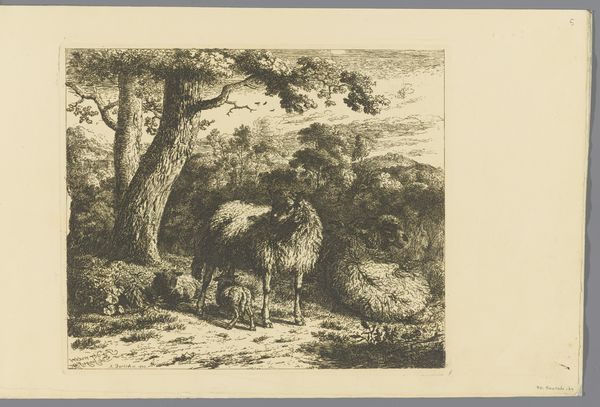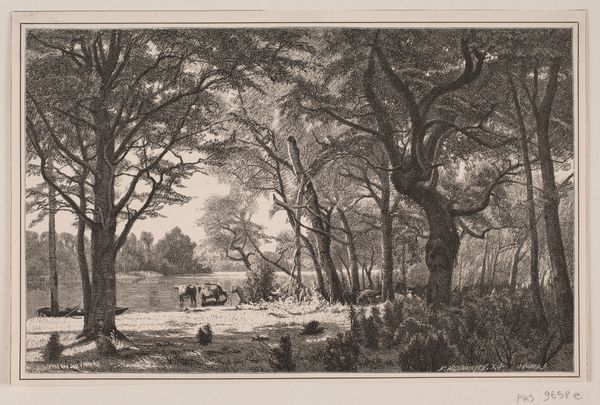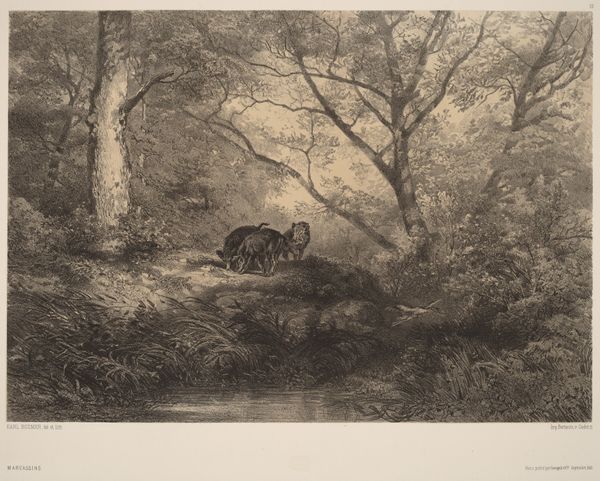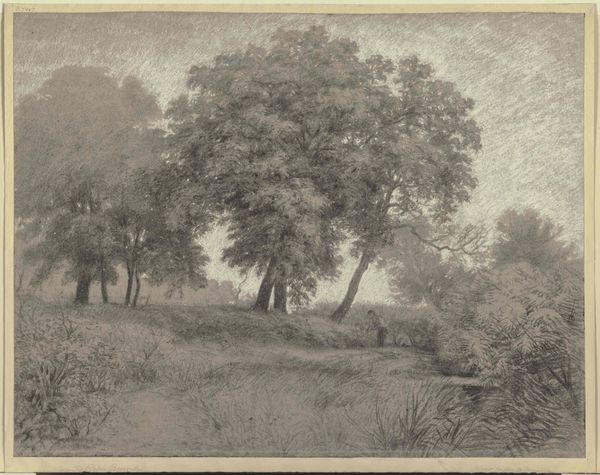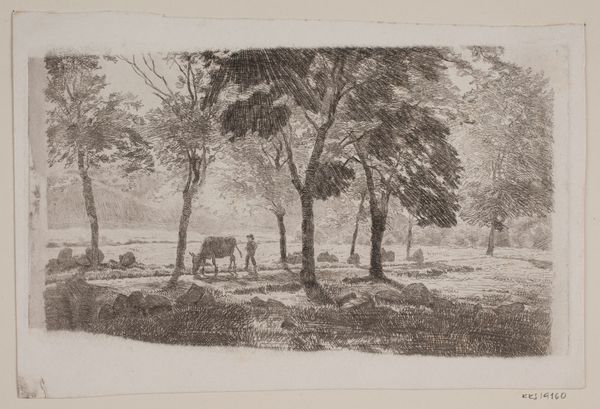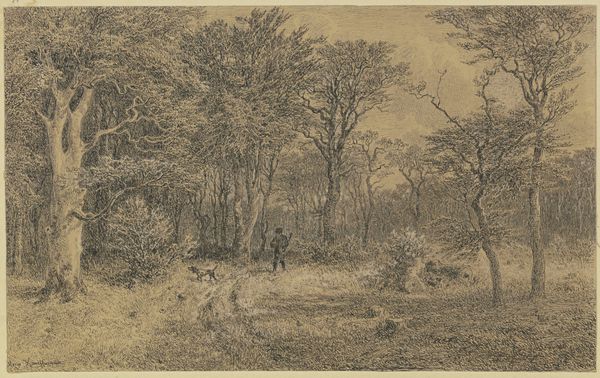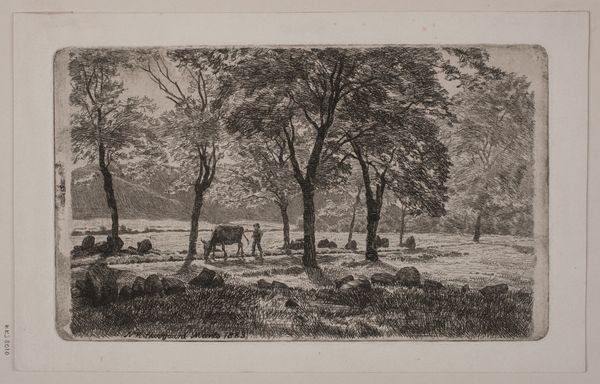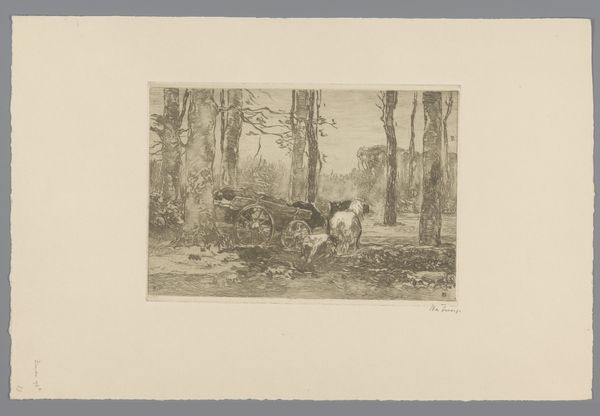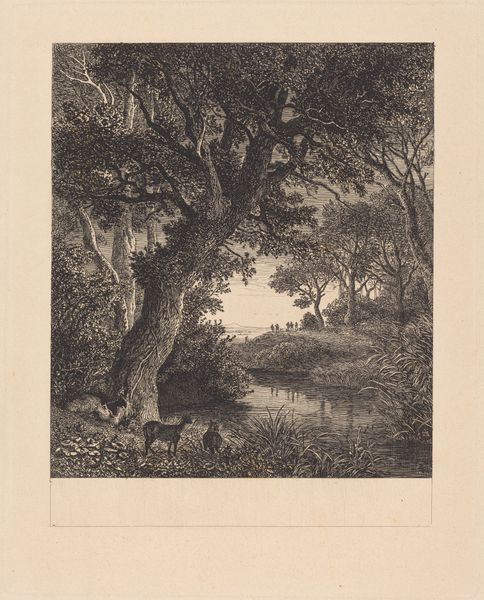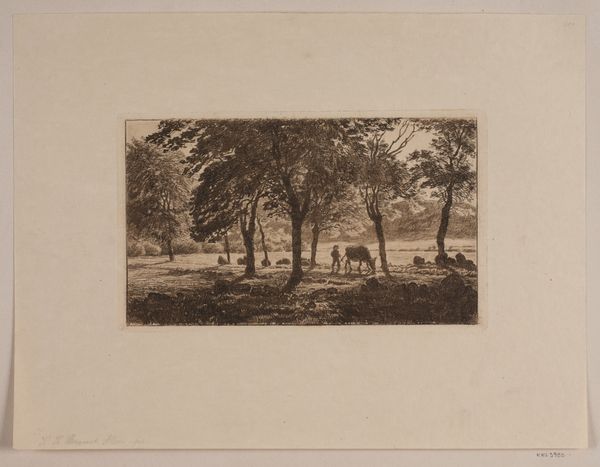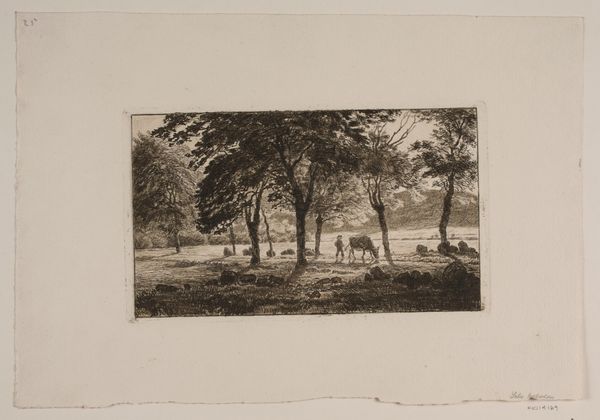
print, engraving
#
pencil drawn
# print
#
pencil sketch
#
landscape
#
pencil drawing
#
engraving
#
realism
Copyright: National Gallery of Art: CC0 1.0
Curator: Here we have "Cerfs au Gagnage", or "Stags at Pasture", an engraving by Karl Bodmer. We don’t have a specific date for this work, but it showcases Bodmer's incredible skill in capturing naturalistic detail. Editor: It’s a serene scene, isn't it? The delicate shading creates a palpable sense of quiet and intimacy. The stags almost seem to blend with the undergrowth. Curator: Bodmer was, of course, known for his meticulous recordings of the American West during his travels with Prince Maximilian. While this particular print appears to depict a European setting, you can see the same dedication to accurately portraying the environment. Editor: Right, and I see it in terms of representation too. Depicting animals like this, in such a tranquil state, reflects certain human values attributed to the natural world. This kind of work normalizes ideas about what 'nature' is, even codifies its use. How did images such as this one, influence policy decisions or public sentiments about environmental spaces and wildlife management, in its time? Curator: Interesting question. Given Bodmer's focus on realism, his art may have, at times, contributed to a growing awareness—and perhaps even a romanticized view—of landscapes as sites needing protection and preservation, therefore deserving legal parameters for those protections. Prints like these would have reached a wide audience through illustrated books and periodicals, informing public perception. Editor: The choice to depict the deer not as adversaries but as passive consumers emphasizes the importance of animals, yes. But even that, by representing a specific angle on what could easily serve as game animals shifts our perspective, even our empathy toward animal conservation. So maybe the deer are meant to look safe in their domestic or tamed pasture—because there are political motives for why it seems so peaceful, not always as peaceful as we expect! Curator: And it also prompts thinking around who benefits from seeing these animals protected in their time. Who has access to those spaces, even symbolic access through images like this one. Editor: Absolutely, because that very act of ‘pasturing,’ contains certain levels of artifice, of power dynamics at work between animals, the people in power at this time in history, and the ecosystem overall. It becomes crucial to contextualize such a depiction to unveil some sociohistorical and economical roots. Curator: A potent reminder that what appears straightforward on the surface always bears closer examination! It encourages us to ask deeper questions about how artistic choices reflect and reinforce wider social attitudes, at the intersection of man and nature. Editor: Definitely! It underscores the fact that these serene landscapes, and depictions of them, were and remain products of intricate negotiations.
Comments
No comments
Be the first to comment and join the conversation on the ultimate creative platform.
